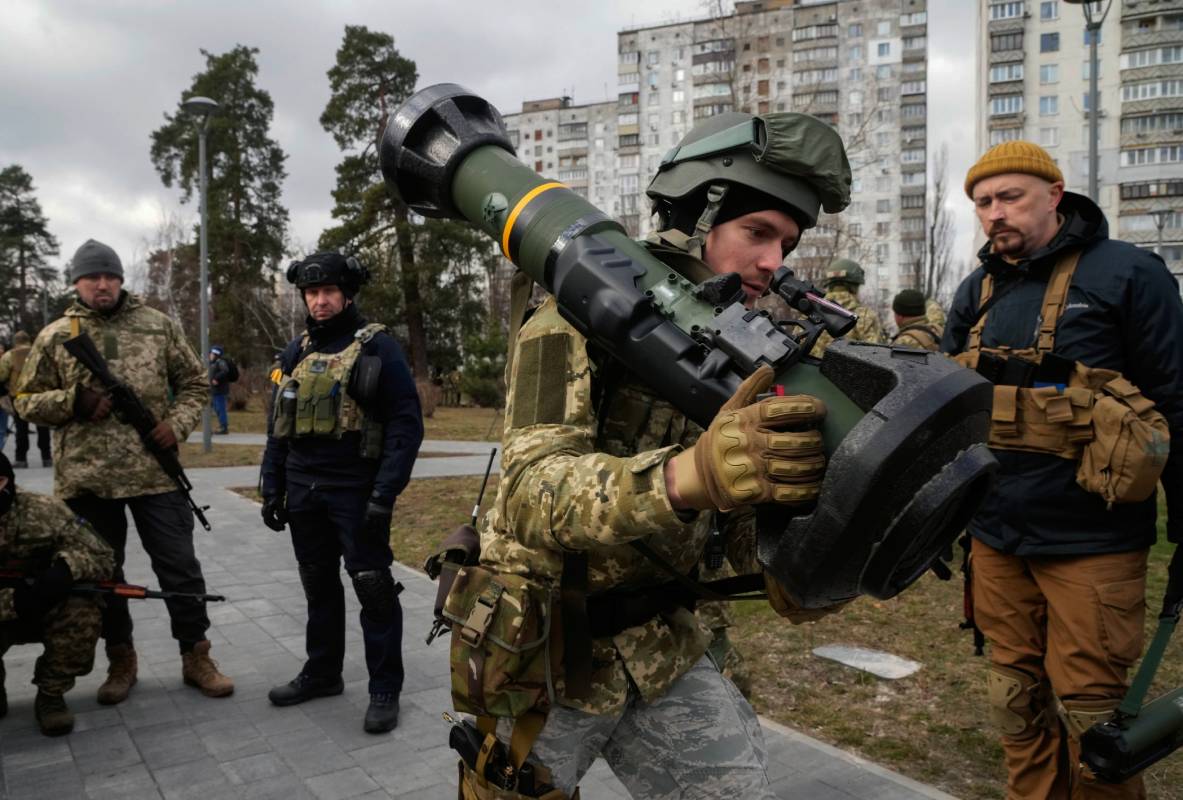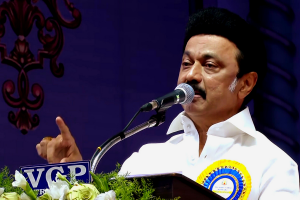On 1 September 1939, Germany invaded Poland forcing Britain and France to declare war triggering the Second World War (WW-II) that would claim the lives of 72 million people, including 24 million soldiers of warring nations and 6 million Jews exterminated at Nazi concentration camps. More than 200,000 perished in the two atom bomb explosions in Hiroshima and Nagasaki. This was perhaps the deadliest multipolar conflict in human history, compared to which the casualties of World War I – 17 million dead and 20 million injured ~ look rather modest.
Fortunately, the world did not end in August 1945, though it came quite close to it during the last century, as during the Cuban missile crisis of 1962. Human history is saturated with confrontation, conflict and violence ~ indeed an endless river of blood courses through the millennia of mankind’s journey from its unremembered beginning. Yet these conflicts have also taught humanity to come closer together in some way.
Advertisement
Though ethnic and sectarian strife continue to plague human society in various parts of the world even now claiming many lives each day, wars between nations today are far fewer and perhaps also fought with more justification than before, territorial expansion not being one of them. The ongoing Russia-Ukraine War is more an exception rather than signifying any trend. Unlike in the past, the world has come to hate war that is glorified no more for the bravery and heroics of soldiers and is reckoned more for what it actually is ~ atrocities, destruction, murders and bloodbath.
Historians identify the Industrial Revolution in 18th century Europe as the beginning of an era that spawned spiralling demands for natural resources among European nations that led to colonisation of Asia, Africa and the Americas ~ the entire non European world was only a source of raw materials and slaves. Exploitation of earth’s resources the world over was essential to provide energy to the machines that drove the industries in Europe.
Competition for resources led to conflicts of interest which in turn led to wars that broke out not for satisfying the political and territorial ambitions of nations as in the past, but because of economic reasons. At the beginning of the 20th century, three European countries ~ Britain, Germany and France ~ used to control about half the world trade and 60 per cent of the world market for manufactured goods. No country was ready to accept any reduction in their share of economic gains derived from trade and market share of their goods in other countries.
When Thomas Malthus began his famous study on population in 1789, the world had a population of only about 900 million, about 65 per cent of which resided in Asia and only 20 per cent in Europe. By 1900, Europe’s share of world population had risen to 25 per cent, fuelled by the improvement in living standards brought about by the Industrial Revolution and wealth plundered from colonies.
The 18th century world was a highly fragmented one, with few sovereign nations and an endless number of small kingdoms and principalities in all continents constantly fighting and bleeding each other. War was a way of life; in Europe, every country was at war with practically every other country. Politics was shaped by the requirement of wars which also defined socioeconomic externalities.
As a result, the number of major wars fought between nations steadily increased from 146 during the 15th century to 325 during the 18th century, but soared to 766 during the 19th century (325 between 1801 and 1850, and 541 between 1851 and 1900). The first half of the 20th century witnessed 450 wars (including 118 battles of WW-I and 215 of WW-II), after which the UN came into existence. This was followed by a sharp decrease in the number of wars. The second half of the 20th century recorded only 123 wars fought between nations. The present century saw two major wars both involving the US: the Afghan War in 2001 in retaliation for 9/11, and the Iraq War in 2003. In 2002, Israel also attacked Palestine. Between 2001 and 2010, Somalia, Ethiopia, Chad, Uganda, Sri Lanka, Sudan, Democratic Republic of the Congo, Georgia, Chechnya, Yugoslavia and Czechoslovakia also faced violence and conflicts, but mostly due to civil wars and ethnic strife, rather than wars between nations. Since 2010, we have had civil wars in Syria, Iraq, Mali, Sudan Afghanistan, Libya, Nigeria and conflicts between Palestine and Israel. Many of these are due to the Islamic fundamentalist forces of Taliban, Al Qaeda, Al Shabab, Boko Haram, ISIS or the like.
Despite the Russia-Ukraine War that has been raging for 16 months now, one can say that compared to the previous centuries, the present century has so far been relatively peaceful, though fundamentalist forces threaten to tear this peace asunder. One reason for this is the advent of democracy in different parts of the world, and as Amartya Sen had said, democracies rarely, if at all, fight each other.
Emergence of nation states in the nineteenth century may have played a part in this when they started replacing empires, kingdoms and citystates. It brought legitimacy to political power and created a new template for world polity that ultimately got institutionalised in the League of Nations after WW-I and the UN after WW-II.
After having exhausted themselves in all respects during the Second World War, major powers finally emerged from the dynamics of war-making, adopting peace as the model for remaking the war-torn world. The end of World War II ushered in a bipolar world that collapsed in the early 1990s. As Eric Hobsbawm said in his “Age of Extremes”, after the 1990s, an old era had ended and a new era began in human history.
The subsequent period would be marked by increasing integration of nation states, proliferation of democracy, increasing globalisation and cooperation between nations to address common concerns like climate, ocean and space, adoption of common Sustainable Development Goals, secularisation of politics and reduced role of religion in public affairs. However, some of these developments are seeing a reversal now, and world polity is seemingly being reshaped by a renewed spirit of religious resurgence, ultra-nationalism and increasing protectionism leading to deglobalisation.
But these are unlikely to cause wars between nations. In his book ‘Capital’, Thomas Piketty had shown that growth rates of the world GDP had shown substantial increase and resilience ever since war had ceased to become the defining feature of international relations. Given that peace and political stability are the prerequisites of growth, this certainly is not surprising. Post WW-II, the global GDP growth has more than doubled to 3 per cent compared to the prewar periods.
It has lifted millions out of poverty and brought prosperity, but has not been able to ensure equity and fairness. The reality of the last century when the West with its superior military and economic powers determined the course of the world has changed drastically, with emerging nations challenging the dominance of the West, though their voice is yet to find more resonance in the world’s affairs as the West with its fading powers is trying hard to resist any weakening of its stranglehold.
The heft of the G-20 nations today outweighs that of the developed G-7 nations which today command only 30 per cent of the global GDP in PPP terms – down from 70 per cent in 1989, 30 per cent of world trade and 10 per cent of world population. In comparison, the G-20 countries including the G7 account for 85 per cent of global GDP, 75 per cent of world trade and two-thirds of the world population.
The five BRICS countries alone command more economic power than the G-7. But the institutions that determine the political and economic trajectories of the world ~ UN Security Council, World Bank and IMF ~ are still unfairly being dominated by the West and continue to reflect their collective will.
Given that economics remains one of the major causes of conflicts, a positive correlation can be expected between wealth and war, and data supports this. The global GDP growth had increased at an average compound rate of 0.5 per cent during 1700-1820, peaking to 4.91 per cent during 1950-1990 which marked the end of the cold war.
This also reflected the longest period of relative peace with the least number of wars fought between nations, as noted earlier. The global GDP growth then fell to an average of 3.4 per cent during the next two decades and 2.4 per cent during the next, before the pandemic battered the growth down to -3.3 per cent in 2021.
But post 1990, the world has seen many more internecine conflicts and civil wars rather than international wars, and that can be correlated to uneven distribution of wealth and political power and inequality within a country. As per the World Inequality Report 2023, the poorest half of the global population barely owns any wealth, possessing just 2 per cent of the total, while the richest 10 per cent of the population owns 76 per cent of all global wealth.
As the report observed, global inequalities between nations today remain the same as at the peak of Western imperialism in the early 20th century. In 2021, the average income of North America was thrice the world average, while that of SubSaharan Africa was only 30 per cent of the world average.
So long as the world cannot assure an equitable distribution of wealth and prosperity among nations, the root cause of conflicts will not be eliminated.
(The writer is a commentator, author and academic. Opinions expressed are personal)











